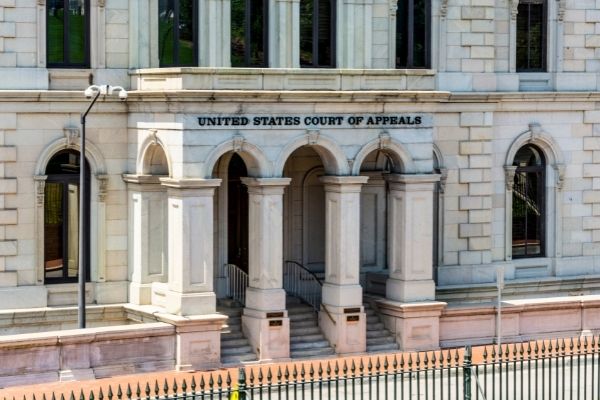Experienced Federal Appeal Attorneys: Experienced Depiction for Complex Situations
Experienced Federal Appeal Attorneys: Experienced Depiction for Complex Situations
Blog Article
Debunking the Process of Federal Appeals: What You Need to Know
Navigating the elaborate world of government charms can frequently appear like traversing uncharted waters for those not familiar with the procedure. Recognizing the subtleties of appellate court jurisdiction, the complexities of filing a notice of appeal, offering a compelling quick, and making a persuasive dental argument are essential elements that can dramatically affect the outcome of an instance. By unwinding the layers of complexity surrounding federal allures, individuals can gain a clearer understanding into the systems that govern this important phase of the lawful system.
Recognizing Federal Appeals Process
Delving into the intricate realm of the government appeals procedure reveals a structured and systematic journey through the judicial system. Federal appeals work as an important system for assessing decisions made by reduced courts. Comprehending this process is crucial for anyone associated with legal procedures at the federal degree.
The process typically begins with a party disappointed with a reduced court's judgment submitting a notice of allure. This activates a review by a higher court, where a panel of courts analyzes the legal debates offered by both celebrations. Briefs laying out the legal reasoning behind each party's position are sent, and oral disagreements might be heard to make clear intricate problems.
The appellate court's decision is based on a complete examination of the reduced court's procedures and the arguments provided. As soon as the appellate court reaches a decision, it can verify, reverse, remand, or change the lower court's judgment, providing clarity and finality to the lawful conflict.
Appellate Court Territory Clarified
As we progress from recognizing the government appeals procedure to dissecting the details of appellate court territory, a basic facet comes to light regarding the authority and limits of these higher courts in the lawful landscape. Appellate court territory refers to the extent of cases that a particular appellate court has the power to assess and decide upon. Unlike trial courts that hear situations for the initial time, appellate courts are restricted to evaluating decisions made by reduced courts. These decisions can include judgments from both state and federal courts.
Appellate courts have jurisdiction over details types of situations, typically those including lawful mistakes, procedural problems, or questions of regulation as opposed to valid disagreements. The territory of appellate courts is usually laid out in statutes and regulations that regulate the court system. Understanding appellate court jurisdiction is crucial for events associated with the charms procedure as it establishes whether a case is qualified for review and the extent to which the appellate court can intervene in the reduced court's choice.
Declaring a Notice of Charm
The preliminary action in beginning the federal allures process entails submitting a Notification of Appeal with the proper appellate court. This critical file officially notifies the court and the various other parties associated with the case that the appealing celebration plans to seek an evaluation of the lower court's decision. Filing a Notice of Allure is a stringent step-by-step need that establishes the appellate procedure moving.
When preparing the Notification of Appeal, it is vital to guarantee compliance with the certain policies and standards of the appropriate appellate court. federal appeal lawyers. The paper has to commonly consist of details such as the instance name, the reduced court's name, the date of the judgment being appealed, and a concise declaration indicating the grounds for the allure

Rundown and Oral Argument
In the appellate procedure, offering created briefs and participating in dental arguments play essential duties in promoting for the appealing event's navigate to this site setting before the appellate court. Briefs are extensive legal documents that outline the events' disagreements, lawful authorities, and evaluation sustaining their positions. These composed submissions give the court with a thorough understanding of the facts of the situation, the relevant law, and why the appealing party thinks the reduced court's choice need to be rescinded.
Adhering to the submission and review of the briefs, dental disagreements provide the parties a chance to further clarify their placements, resolve any inquiries the appellate courts might have, and emphasize bottom lines from their written briefs. Dental arguments are a possibility for the attorneys to convince the courts via verbal advocacy and actions to inquiries from the bench.
Both the created briefs and oral debates are essential elements of the appellate procedure, enabling celebrations to provide their instance completely and compellingly prior to the appellate court. - federal crime attorney
Obtaining the Appellate Court Choice
The appellate court's choice is generally delivered in a written layout and details the court's conclusions on the lawful concerns offered, the reasoning behind their choice, and the judgment made. The time structure for getting the appellate court's choice can differ, but courts aim to offer timely resolutions. Whether the appellate court attests, turns around, or remands the lower court's decision, understanding the implications of the ruling is important for all parties entailed in the appellate process.
Verdict
Recognizing the appellate court jurisdiction, filing a notification of allure, preparing briefs, and presenting oral arguments are all important elements of this procedure. Ultimately, getting the appellate court decision can offer clearness and resolution to legal conflicts.
As we proceed from comprehending the government charms procedure to dissecting the complexities of appellate court jurisdiction, an essential element comes to light concerning the authority and limits of these greater courts in the lawful landscape. Appellate court territory refers to the range of situations that a specific appellate court has the power to review and determine upon. Unlike test courts that listen to situations for the very first time, appellate courts are limited to evaluating decisions made by lower courts. Comprehending appellate court territory is critical for celebrations entailed in the charms procedure as it establishes whether a case is qualified for evaluation and the extent to which the appellate court can interfere in the reduced court's decision.

Report this page